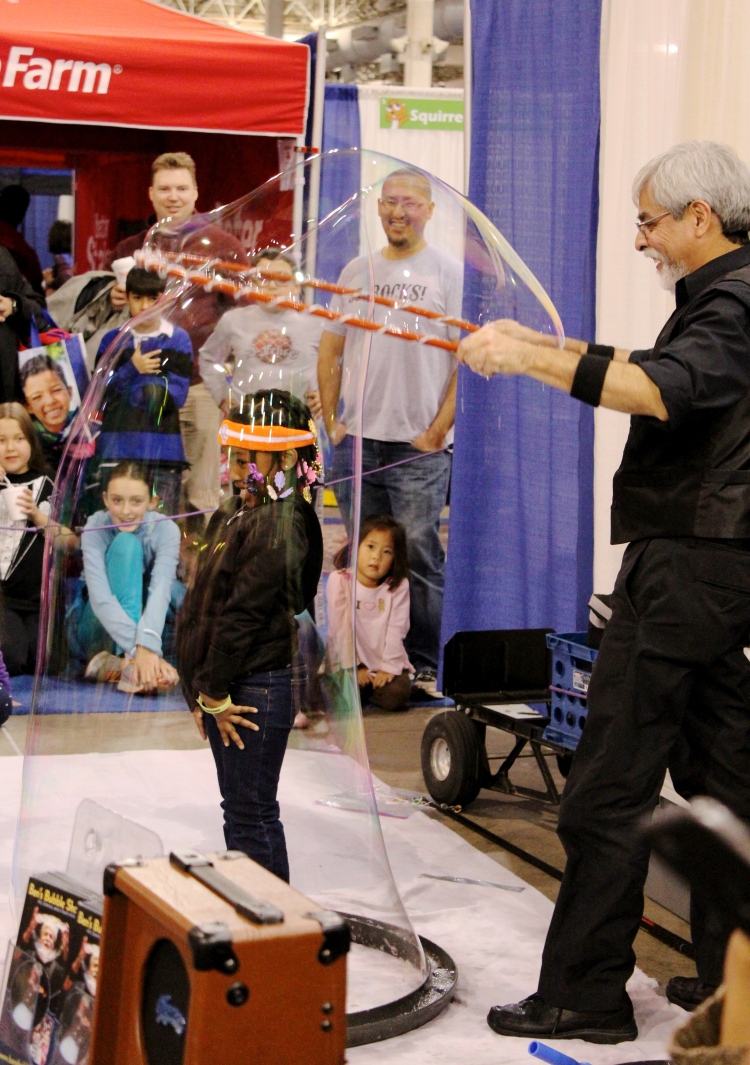The Gizmos and Gadgets of Toy Manufacturing
By Shanice Harris

Chicago is a hot spot for toys for toddlers just learning to walk, up to the adults that work from nine to five and pay their bills in a timely manner. Every year, toy lovers gather together to share in their passion and create new designs for the future at the Toy and Game Innovation Conference which was held at Navy Pier this past November.
Walk the floor at the toy conference and you’ll see toys, like Luv N’ Learn Friends, with integrated technology to help kids learn as well as traditional toys like Living Puppets which stand 14 to 25 inches tall.
Chicago is home to toys and toy companies that have changed the landscape of the toy business. Showdown Yahtzee and TMX Elmo are just two recent examples of popular toys created from Chicago.
Chicago is one of the biggest markets in the toy business, alongside San Francisco, Los Angeles and New York, according to Rich Mazel, director of global toy acquisition at Hasbro. He says the toy industry is in a tough position right now because prices are rising in China to manufacture product since the Chinese middle class has been advancing with wages increasing. “We’re feeling downward pressure still at retail to keep the prices low,” says Mazel. “We are trying to find alternative ways or new price points that can make toys more compelling and be profitable.”
Moving production to other cheap labor countries tends to be the solution that Hasbro and other toy companies are doing to combat the rising oversea prices. According to Euromonitor International, Mattel, the world’s largest toy maker, moved part of its production from China to Brazil and India. “Some other production, not toys as of yet, have been coming back to the U.S.,” says Mazel.
64 Colors, the independent toy company in Chicago that produces Marshall and Friends, feeling the pressure to move production back to the U.S. “Cost is always a factor in production of any product,” says a representative of 64 Colors, Eric Ovresat. “It is currently less expensive to manufacture in China but it’s also more difficult as it takes longer. Wood toys manufactured in Michigan make sense and are less expensive.”

Small companies, like 64 Colors, are finding new ways to attract and keep a loyal consumer base in order to compete in the market. They specialize in custom toy and collector items and create their characters to have a soul and something that would not be found anywhere else. “Their support is critical to our success.
Big companies can crank out a ton of toys where as we have to be very select in what we produce,” says Oversat.
The price points on toys are not just being affected on the manufacture end, but in the retailers as well. “We’re noticing that low price points and very high price points are selling well, the stuff in the middle isn’t doing so well,” Mazel says. The reason for this is because of the current trends in toys and games.
“We’re feeling downward pressure still at retail to keep the prices low,” says Mazel. “We are trying to find alternative ways or new price points that can make toys more compelling and be profitable.”
A top trend is toys that integrate smart devices and that blend physical and digital play. “Skylanders is one example of this, from Activison,” says Mazel. “It uses near field computing and you can scan them into your own video games.” It incorporates a physical toy, but it also goes into the digital world. It’s a trend that will continue as children use smart devices.
“Toy companies were slow to either buy or develop their own in-house units to do software development,” says Mazel. “The early attempts by the toy industry to put physical product with iPhone apps weren’t so good because the software wasn’t very compelling.”
Today, many toy companies are fully embracing the trend. Because of the advancement in technology Mazel says there will soon be more hybrid toys. “Your toys will become very much aware,” he says. “So, your R2D2 will be able to speak to your teddy bear and know they are in the same room and be able to interact. Toys are going to get a lot smarter.”
Photos by Kirsten Demass
Edited by Kirsten Demass